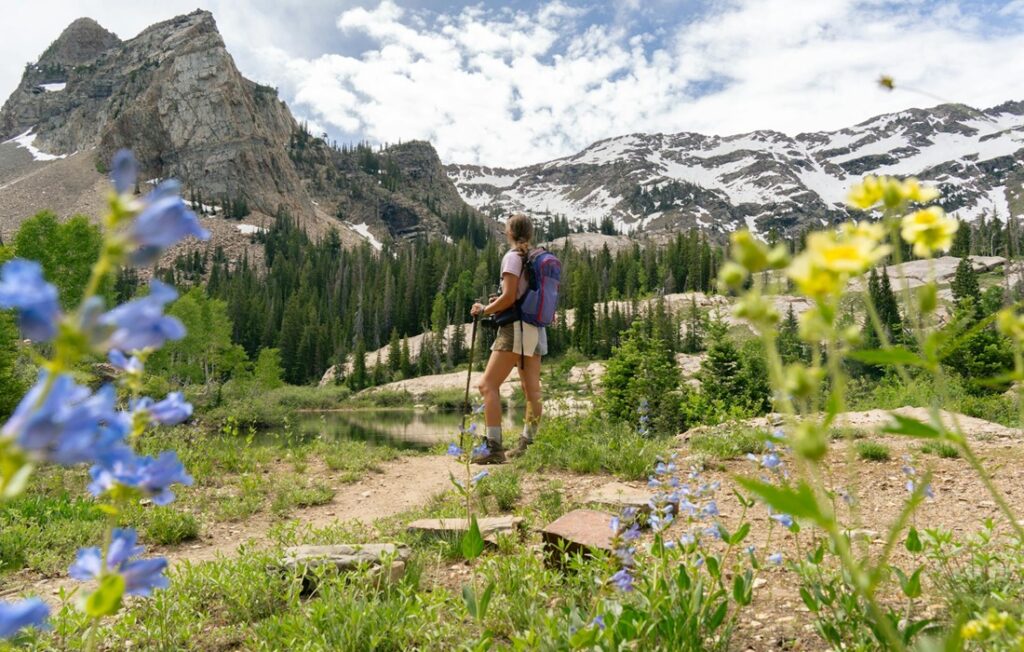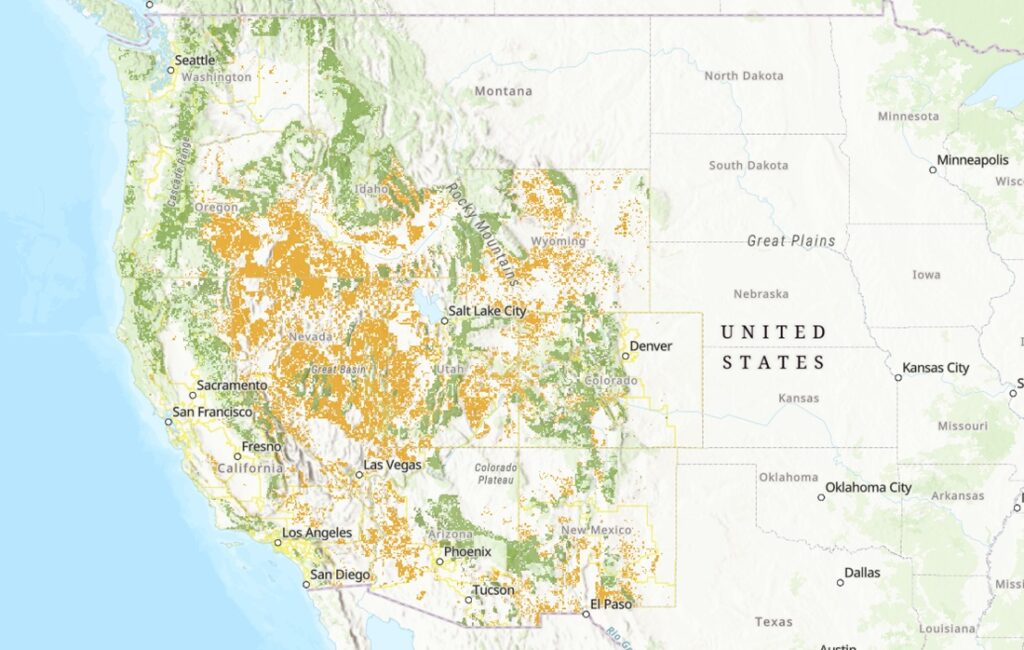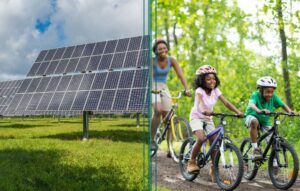Update - 6/30/25
Success! The public lands sell-off has officially been removed from the Senate’s reconciliation bill. HOWEVER, this is definitely not the end of representatives trying to sell or “repurpose” our public lands… Senator Mike Lee has already said as much. It’s vital that we continue to remind our representatives on a regular basis that our public lands are beloved, play pivotal roles in environmental health, outdoor recreation, human health, and American culture, and–most importantly–they belong to the people.
Update - 6/27/25
On June 24th, the Senate’s parliamentarian ruled the proposal discussed in this article cannot move forward (as it currently stands) as part of the reconciliation bill making its way through Congress as it violates the Senate’s Byrd Rule. Senator Mike Lee has stated that he plans to revise his plan, and it is currently unclear whether a new version will be resubmitted as part of the reconciliation bill. It’s important to continue contacting your representatives, sharing on social media, and making it known that our public lands are not for sale! Your voice is being heard; keep at it.
Members of the United States Senate Committee on Energy and Natural Resources included a provision in the “Big Beautiful Bill” reconciliation that aims to sell a minimum of 2 million acres of public lands in order to help fund Congressional spending (a.k.a., those tax cuts for the wealthiest Americans that everyone has been talking about).
How do we know this? Let’s break it down.
What the Proposal Says
The included provision requires the Bureau of Land Management (BLM) and United States Forest Services (USFS) to make 0.5% – 0.75% of their land holdings in 11 western U.S. states available for sale. These states are Alaska, Arizona, California, Colorado, Idaho, Oregon, Nevada, New Mexico, Utah, Washington, and Wyoming.
Check out this map from the Wilderness Society for a visual of what lands are at risk (click for an interactive view):
This provision is framed as a solution to address the housing crisis in America, though the language is concerningly vague. Additionally, the funds from the sale of these lands would not go into a Federal Land Disposal Account as is currently required by law (the Federal Land Transaction Facilitation Act, or FLTFA). Instead, 90% of the proceeds of these sales would be deposited directly into the U.S. Treasury’s general fund. In other words, Congress gains full access to this money without restrictions on how to use it.
What the Proposal DOESN’T Say
5 Key Takeaways to Help You Understand What’s at Stake
#1 – Claims to address the housing shortage issue but includes vague language without any clear instructions or guardrails.
The proposal from the Senate does not provide any guidelines or guardrails for the development of affordable housing on any of the 2 million acres of public lands that would be sold as a result of this provision. In fact, according to the University of Colorado Law School’s assessment, this proposal DOES NOT…
- Restrict the use of these lands for the development of low-cost/affordable housing.
- Prevent the development of this land for luxury homes, vacation rentals and/or Airbnb rentals, or other forms of luxury development on lands desired for their scenic views.
Notably, there is also no language in the proposed provision that prevents the sale of these lands for the specific purposes of mining or drilling for oil or gas.
And while the proposal does indicate lands that are not to be included in these sales—for example, National Parks, National Monuments, National Historic Sites, and National Recreation Areas (see Section II of this report for the full list of areas excluded from the potential sale of public lands)—it absolutely does include Wilderness Study Areas, Areas of Critical Environmental Concern, and Late Succession Reserves, which are critical to ecosystem health, wildlife migration, and protecting old-growth forests (which store the most carbon by far of all plant life).
That brings us to our second point.
#2 - Public lands don’t exist in isolation. (Although, some of these lands are really, really isolated.)
While the idea that these lands could be used to address the housing crisis might seem like a decent idea on the surface, look a little closer and the idea falls very, very flat. That’s because the vast majority of these lands are extremely remote with little to no available infrastructure.
Many of these lands directly surround national parks, national forests, and other protected spaces the proposal directly carves out. And all of them provide essential ecosystem benefits, act as critical wildlife corridors, are permitted for livestock grazing, and/or are publicly available for outdoor recreation such as hiking, biking, horseback riding, skiing, hunting, and fishing.
These ecosystem services don’t exist in a vacuum. It’s well documented that undisturbed ecosystems void of human development are fundamentally important for carbon sequestration, biodiversity, and overall environmental health—all things that are crucial for the clean air, clean food, and clean water we all need to survive. Disrupting these intact ecosystems would significantly alter these natural services, rendering them less effective overall; a particular concern given that these lands sit in states that are already prone to drought and wildfire.
Plus, at the end of the day, it’s really bad for our budget.
#3 – The economics simply aren’t there... and neither is the infrastructure.
We’ve touched on this a little bit already, but it’s important to fully understand just how little infrastructure currently exists on these lands; much of which is uninhabited. Why is that a problem? Because proper infrastructure is expensive to develop. According to the American Society of Engineers’ 2025 Report Card for America’s Infrastructure, the amount of money that would be needed to bring America’s current infrastructure up to good/adequate standing is more than $9 trillion. $538 billion for bridges, $61 billion for broadband, $670 billion for drinking water, $1.8 trillion for energy—the list goes on. And this is all for existing infrastructure. Developing infrastructure from scratch? Not cheap.
If any of the identified public lands are sold to individual states for the purpose of creating affordable housing, the cost of land management and infrastructure development will also fall to the states and their taxpayers; a huge bill that most (if not all) states don’t have the capacity to pay. If the land is sold to private developers, there is no financial incentive for these developers to create low-cost, affordable housing and the necessary associated infrastructure. Rather, luxury vacation housing (with high price tags for the views), commercial development, and mining are far more likely endeavors, and the vague language used in the Senate’s proposal leaves room for these types of projects to take place.
Another potential costly risk associated with building affordable housing on these lands is that many of them are located in well-documented wildfire corridors. Fire suppression efforts at both the state and federal level cost billions of dollars annually; a number that has more than tripled in the last 30 years alone. This is due to factors such as drought, vegetation cumulation, and the wildland urban interface. The “wildland urban interface” is a term used to describe population growth and housing development in wildfire-prone areas. According to the U.S. Department of the Interior, “…landscapes that need fire [management] are increasingly mixed with houses that need to be protected from the fire.” The result? Elevated fire management risks that come with an increased price tag for taxpayers.
#4. The legality is questionable at best.
Congress has long-standing guidelines for the use and “disposal” (sale) of public lands. In 1970, a review of existing public land policy by the Public Land Law Review Commission resulted in the determination that, “future disposal [of public lands] should be only of those lands that will achieve maximum public benefit for the general public in non-federal ownership,” and the implementation of new policies for Congressional oversight of land sales. This new proposal acknowledges that its suggested nomination process conflicts with previously established laws (as proposed, Congress would no longer have oversight of these public land sales) and seeks to waive them entirely, making them null and void.
And states’ rights? Not quite. This new proposed land identification and sale process does not give states, municipalities, or tribal nations the right of first refusal before the federal government sells these lands to private entities. This is the right of the municipality, state, or tribal nation to be first in line to purchase this land. Many American Indian tribal nations have existing treaties, co-stewardship and co-management agreements, as well as right of first refusal for lands held in trust by the federal government; all of which offer these communities a chance to manage and buy back their ancestral homelands. This new proposal attempts to bypass all of these existing agreements; the legality of which is a serious concern.
#5. It’s a bad precedent that puts beloved places at risk.
This is the first time ever that the sale of public lands is being presented as a way to pay for Congressional spending, and it’s a very bad precedent to set. At the end of the day, public lands belong to the people; they’re an asset we all have access to. Whether you’re a hiker, a hunter, a fisher, or simply a lover of nature, these spaces are ours. And once they’re gone, they’re gone for good.
Experts fear that, should Congress be allowed to make money from the sale of public lands, this is a resource they will continue to come back to time and time again. Current and future generations of Americans will continue to lose access to the wild spaces we all love and cherish, to the ecosystems we rely on, and to the irreplaceable landscapes that are essential the history, culture, and fabric of this country.
All to pay for tax cuts for the wealthy? No thanks
Voice Your Opposition!
Make your opinion known by contacting your representatives in both the Senate and the House and telling them our public lands are not for sale! (While the bill may currently be in the Senate, it will have to go back to the House for another approval vote, so make sure you reach out to all your reps!)
Check out this awesome resource from the National Association of Forest Service Retirees for sample language to use!
Take your opposition online. Share this article with your community, tag your reps on social media, and demand that they leave our public lands alone. Congressional representatives, both Democrat and Republican, have already voiced their opposition to this proposal, so there is most certainly room to move the needle. Now is the time to take action. Your voice matters!





